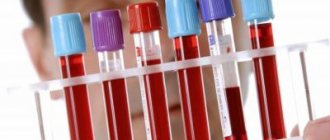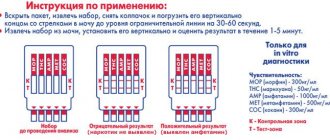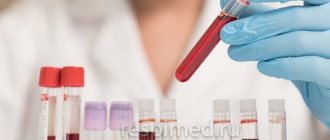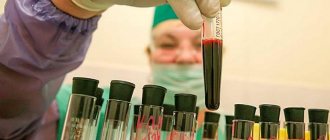The issue of speed, of course, is very important when it comes to a dangerous disease. I would like to be sure how many days an HIV test is done, so that I can quickly take active action. The speed of readiness of the HIV status result depends on many factors.
Of course, the first factor must be the duration of infection. If there was recent contact with a sick person, up to 2 weeks ago, then it is impossible to determine the presence of the virus in the blood. If the deadlines have already been determined, then it’s time to donate blood. It may still take some time to make a diagnosis. When contacting a laboratory, you should be aware that the timing of a blood test for HIV can be upsetting and frustrating. The method by which the research will be carried out and the workload of personnel in the laboratory also influences. In different institutions, the answer will be different, how much blood testing for HIV is done and whether it is possible to speed up the process of obtaining results.
You need to see a doctor who specializes in the immunodeficiency virus; a good specialist will provide directions for the necessary test.
An HIV test, the timing of which suits the doctor, should not cause concern to the patient.
Blood test for HIV and AIDS
How long does it take to test a blood for HIV in a clinic? It is not always possible to get results quickly. On average from 2 to 10 days. In free clinics, the analysis still takes longer; it is extremely rare that the results are given out in 2-3 days, more often it is 8-10 days. On a paid basis, it is possible to wait for a response much faster.
Ignatov Petr Gennadievich
Infectious disease physician
Ask a Question
How long does an AIDS test take? It is important to remember what AIDS is called and how it differs from HIV. Acquired immunodeficiency syndrome does not require a separate study; it is worth monitoring the amount of immunodeficiency virus in the blood and the clinical picture of the disease. The onset of the terminal stage is noticeable by a change in well-being, therefore it is better to ask the question of AIDS analysis, the timing of readiness, more correctly, using the term HIV instead of AIDS.
How long does it take to prepare an HIV test in paid clinics? In private institutions they try to hand over the results as soon as possible, but it all depends on the method.
Polymerase chain reaction (PCR) for HIV
HIV PCR is one of the earliest diagnostic methods; it shows results in the first stages of the disease, when other methods of detecting the virus are not yet effective. Thus, at the first suspicion of initiation, within the first two weeks after a potentially dangerous contact, a PCR test is done.
Such an analysis can be done already on the 10th day after contact with the patient’s fluids. The result can be found out on the day of blood donation if you ask for an urgent test, or within 7-10 days in a standard mode.
Immunoblotting for HIV
Such a study is carried out to verify the results. As you know, a diagnosis cannot be made after one test; other types of research should be carried out. The principle of immunoblotting is similar to ELISA, we are talking about the antigen-antibody scheme, the object is not the antibodies of the immune system, but the viral protein.
How many days does it take to prepare this type of HIV test? 2-3 days on average, although government agencies may delay results due to high workload.
Enzyme-linked immunosorbent test (ELISA) for HIV
This type of analysis is very common and is quite accurate. The only disadvantage can be considered the fact that at an early stage it will not show reliable results. This is due to the fact that the body must recognize the infection and produce antibodies. So how long does it take for HIV to be detected in the blood when tested using ELISA? Ideally, do it no earlier than 3-4 months after infection. It is usually prescribed in cases where the patient comes for examination, already having the first clinical manifestations. Or ELISA is used as an auxiliary method in combination with others.
Rapid HIV test
There are options to check your status quickly. How long does an HIV test take at a clinic and how long does one have to wait in agonizing anticipation? Sometimes people who are at risk of a fatal disease are not prepared to wait several days for an answer from the laboratory. An express status check kit can be purchased at a pharmacy. Carrying out the test is not difficult, following the instructions. The kit includes everything you need to draw blood, as well as a test strip showing the result. The test accuracy is 99%. The waiting time for the result is approximately 10-15 minutes.
BUZ UR "URC AIDS and IZ"
Who needs HIV tests?
HIV is a virus. Unlike people, viruses do not know what discrimination is. The virus does not care about gender, age, social status and sexual orientation - all HIV needs is the opportunity to penetrate the body. There are no “risk groups”; there are situations that are potentially dangerous in terms of HIV transmission:
- — Vaginal or anal sex without a condom.
- - Injecting drugs using a needle, syringe or utensils that have previously been used by other people.
If you are concerned about the possibility of transmitting HIV, you may need information about the risk of infection, as well as about the tests themselves, before going to a testing office.
Why go to the testing room?
People decide to get tested for HIV for a variety of reasons:
— Knowing your HIV-positive status can help people get timely medical care that can prevent serious and life-threatening illnesses. For example, if you have HIV infection, some infections, such as syphilis, must be treated differently. Also, if you have HIV, it is very important to monitor your immune status and other indicators, which allows you to prescribe the necessary antiviral treatment in a timely manner and prevent the development of AIDS.
— Knowing that one is not infected can help a person decide how to make their behavior as safe as possible in relation to HIV. It may also be important for a person to know that he has HIV because he is concerned about the safety of his sexual partner.
— Diagnosis of HIV infection makes it possible to prevent transmission of HIV to a child during pregnancy.
— For some people, knowing their HIV status, even positive, may be less scary than constant worry and obsessive thoughts about possible infection. In any case, taking the test allows you to put an end to the painful uncertainty and make decisions about your future life based on knowledge about your health.
Reasons for refusing testing
A person may also have reasons for not taking the test. He can be sure that there have been no HIV-risk situations in his life. A person may also have more personal reasons for refusing the test. For many people, the stress of knowing about HIV infection, and the possible impact of the diagnosis on relationships and lifestyle, can be much more daunting than not knowing their HIV status. Some people are afraid of divulging the secret of their diagnosis. They may also worry about possible discrimination that people living with HIV may face.
Similar questions bother most people. Everyone decides for themselves what is more important to them: the fear of a possible diagnosis or the benefits of HIV testing. In such a situation, a person may need counseling, or contact a helpline, where he will be helped in making a decision. Advances and progress in medicine in the treatment of HIV infection are the main argument in favor of an HIV test. It has long been known from the history of the AIDS epidemic that the greater the access to medical care and drugs to treat HIV infection, the more people decide to get tested for HIV. When deciding to get tested, it is worth thinking about what options a person has after receiving a positive result. Will he be provided with counseling and psychological support? Will he be able to contact a specialized helpline? Are there support and mutual aid groups and other resources for HIV-positive people in his city?
If HIV infection is incurable and there is no vaccine, is there any point in finding out that you have HIV?
Even if a person has HIV, he can take steps to stay healthy. Although it is currently impossible to completely rid a person of HIV, there are ways to slow down the progression of HIV infection, as well as cure or prevent dangerous diseases.
If there was a risk of HIV infection, when can you get a test?
The enzyme-linked immunosorbent assay (ELISA), which is used to diagnose HIV, can only show results several weeks after infection. This type of analysis determines not the virus itself, but antibodies to it. In some people, antibodies are present in sufficient quantities in the blood after 2 weeks. However, for most people it takes longer for antibodies to form (seroconversion). For the test result to be sufficiently reliable, it is necessary that about 3 months have passed since the risky situation. After 3 months, the ELISA test is reliable in 95-98% of people, that is, in the vast majority. Sometimes the formation of antibodies takes longer - from 3 to 6 months.
If the test result is negative after 3 months, is it necessary to retest after 6 months?
For the vast majority of people, the test is quite reliable after 3 months (in most people, antibodies appear even earlier). You can completely exclude the possibility of infection by getting tested after 6 months. However, for many people, waiting for test results is a very difficult experience. If a person has not had very risky contacts with a known HIV-positive partner, then the likelihood that he will be among those few people whose test is unreliable after 3 months is negligible. Given the stress associated with testing, a repeat test is often not necessary. However, the final decision still remains with the person.
How long should I wait for test results?
The analysis result is usually ready within 3 business days. Considering that waiting for results can be a very unpleasant period, it is best to clarify this issue in advance, before taking the test. You can also find out whether weekends and holidays will affect the timing of the test.
Where is the best place to take the test?
Testing for HIV infection must necessarily be accompanied by a procedure of pre- and post-test counseling, during which the patient receives reliable information about HIV infection, discusses with the consultant the individual risk of infection and ways to reduce risks, and receives answers to all questions regarding the HIV test procedure .
There are two types of testing: confidential and anonymous. If you do the test confidentially, the laboratory staff will know your name, but please note that they cannot disclose it anywhere, as this would be a violation of medical confidentiality. In anonymous testing rooms, you do not give your name, but you are assigned a number or name by which you can find out the test result.
You can get tested for HIV infection at any branch of the Udmurt Republican AIDS Center, as well as at the advisory clinic at the following addresses:
Advisory clinic of the Udmurt AIDS Center: Izhevsk, st. Truda, 17a,
e-mail: This e-mail address is being protected from spambots. You need JavaScript enabled to view it. Phone: 8(3412) 21-15-94, 21-35-94, 21-37-86
Sarapul Zonal AIDS Center: Sarapul, st. Gagarina, 67, lit. "D".
(34147)3-27-43, e-mail: This e-mail address is being protected from spambots. You need JavaScript enabled to view it.
Votkinsk Zonal AIDS Center: Votkinsk, st. Shkolnaya, 2.
(34145)3-36-23, e-mail: This e-mail address is being protected from spambots. You need JavaScript enabled to view it.
Mozhga Zonal AIDS Center: Mozhga, st. Syugailskaya, 19.
(34139)3-26-65, e-mail: This e-mail address is being protected from spambots. You need JavaScript enabled to view it.
Igrinsky zonal AIDS center: village. Game, st. Police, 6.
(34134)4-04-85, e-mail: This e-mail address is being protected from spambots. You need JavaScript enabled to view it.
Glazov zonal AIDS center: Glazov, st. Kirova, 27, lit. "L".
(34141)3-37-07, e-mail: This e-mail address is being protected from spambots. You need JavaScript enabled to view it.
Uva zonal AIDS center: village. Uva, st. Chkalova, 20.
(34130)5-28-19, e-mail: This e-mail address is being protected from spambots. You need JavaScript enabled to view it.
If the result is negative, then there is no need to worry anymore?
If the test was taken after a sufficient period of time during which you had no dangerous contacts, this means you are HIV negative. However, HIV testing and prevention are not the same thing. It is not enough to just get tested regularly; if your behavior remains risky, it may take some time for the test result to come back positive. Fortunately, the transmission routes of HIV are better studied than those of any other virus. Getting a negative result is a good reason to learn as much as you can about HIV prevention and make decisions about how to reduce your risk of infection.
How reliable is a positive test result?
Sometimes ELISA has false positive results (in about 1% of cases), the cause of such a result may be pregnancy, various viral infections, or simple accident. After receiving a positive result, a more accurate test is needed - an immunoblot, based on the results of which a diagnosis is made. A positive immunoblot result after a positive ELISA is 99.9% reliable - this is the maximum accuracy for any medical test. If the immunoblot is negative, it means that the first test was false positive, and in fact the person does not have HIV.
What is an indeterminate result?
If ELISA is positive or negative, then immunoblot can be positive, negative or indeterminate. Indeterminate immunoblot result, i.e. the presence of at least one protein to the virus in the immunoblot can be observed if the infection occurred recently and there are still few antibodies to HIV in the blood, in which case the immunoblot will become positive after some time. Also, an uncertain result may appear in the absence of HIV infection with hepatitis, some chronic metabolic diseases, or during pregnancy. In this case, either the immunoblot will become negative or the cause of the indeterminate result will be found.
Is there a test that can be done sooner?
Diagnosis of HIV infection is made only using tests that detect antibodies. In addition, there is a polymerase chain reaction (PCR) test that determines the genetic material of the virus itself, so it is quite reliable 10 days after possible infection. Sometimes people do a PCR test because it is hard for them to wait 3 months, in other cases it can be prescribed by a doctor, for example, it is given to children born from HIV-positive mothers. However, despite the high sensitivity and reliability, cases of false-positive and false-negative PCR results have been reported. For this reason, even if PCR was done, confirmatory testing using ELISA may be necessary.
If my partner took an HIV test, why should I test?
A partner's test result does not always indicate your status. Your partner may have HIV, but you may remain HIV-negative even after unsafe sex. Also, if you do not have HIV in your regular sexual partner, the virus could be transmitted to you during other instances of risky behavior. If we are talking about a stable relationship, testing is often recommended for both partners at the same time.
What should I do if the test result is negative but I still have symptoms?
First of all, see your doctor about all your symptoms. They can be caused by anything other than HIV infection. The only reliable way to diagnose HIV is testing. Even an experienced doctor cannot determine HIV infection by symptoms. If enough time has passed and the repeat test result is negative, then you do not have HIV, regardless of the presence or absence of symptoms. However, such experiences may be a symptom of AIDSphobia, in which case you should pay more attention to your psychological health.
What to do if HIV is still detected?
It should be remembered that HIV and AIDS are not the same thing. If you are diagnosed with HIV, it means that there is a virus in your body that you cannot completely get rid of at the moment. AIDS is just one of the stages of HIV infection, during which people actually begin to have serious health problems, however, there are medications that can slow down the development of HIV infection and save a person from AIDS. Most people living with HIV do not experience any symptoms and can continue to lead their normal lives. However, a diagnosis of HIV infection can lead to psychological problems and it may take a long time for a person to learn to live with HIV.
The material was prepared using information from the portal https://aids.ru/
Validity periods for HIV tests
It all depends on the purpose for which the tests are taken. If the result is required for the purpose of being submitted to a specific institution, then the deadline is set by its administration. In most cases, test results are considered valid for up to six months or 6 months. When providing test results at the place of request, please note that the result will not be ready immediately; after delivery, you will have to wait several days. It is necessary to clarify how long it takes to perform an AIDS test in the laboratory where the examination is planned to be carried out.
It should be remembered that even if you test positive for HIV, you should not give up. HIV does not always turn into AIDS and people live with it for 30-40 years. This is achieved through a correct lifestyle and therapy, which involves taking anti-HIV medications that inhibit its spread.
AIDS tests
The fundamentals of the legislation of the Russian Federation on protecting the health of citizens establish that any medical intervention requires the informed voluntary consent of the patient. This, in particular, means that blood sampling for HIV testing cannot be legally performed forcibly. An exception is made for patients whose health condition does not allow them to express their will (in this case, the decision is made by a medical council), and for adolescents under 15 years of age (the decision is made by legal representatives).
There are situations in which providing HIV blood test results (not anonymously) is mandatory (but voluntary - anyone can simply refuse to take it):
• donation of blood, other biological fluids and organs, • when applying for a job as a medical worker or other specialists of the “decreed” group, • for foreign citizens - obtaining visas for residence in Russia for a period of more than 3 months, • testing for AIDS of persons in places of detention.
All pregnant women are required to be tested for AIDS.
If HIV infection is detected (positive test result) among foreign citizens and stateless persons located on the territory of the Russian Federation, they are subject to deportation from the Russian Federation in the manner prescribed by law.
HIV ELISA 4th generation
Qualitative total determination of antibodies to HIV 1 and 2 and p24 antigen anti-HIV1.2/Ag p24
Readiness period: from 6-8 hours to 1 day.
The fourth generation test for the screening stage of diagnosing HIV infection allows for the simultaneous detection of total antibodies to HIV-1 and HIV-2 and the p24 antigen.
Antibodies to HIV appear in the blood starting from the 3-4th week from the moment of infection, but in some patients this period can last up to 12 weeks or more. The p24 antigen appears on the 10th day after infection. The simultaneous determination of antibodies and p24 antigens in the analysis is highly reliable in the early period of HIV infection. In cases of a positive result, repeated studies are carried out (AIDS Centers).
False positive results can occur with cancer and autoimmune diseases; false negative - if less than 4-8 weeks have passed since infection, as well as the terminal stage of HIV infection.
HIV DNA PCR
Qualitative determination of provirus DNA (whole blood)
Readiness period: 2-7 calendar days.
Determination of HIV provirus DNA can be used in the early diagnosis of possible infection after an episode of increased risk (10 days after potential infection). However, to completely exclude infection, it is necessary to subsequently conduct a repeat study and ELISA test for HIV antibodies at 4 and 12 weeks.
When DNA of the HIV provirus is detected, repeated additional studies are required to confirm HIV infection. If the result is negative, but there is a high risk of infection, a repeat examination is required to exclude HIV infection.
Indications for testing:
- Early diagnosis of HIV infection;
- Examinations of children born to infected mothers (under 18 months of age);
- Cases of questionable and positive results of antibody determination by ELISA.
HIV RNA PCR
Quantitative HIV (viral load)
Readiness period: 2-7 calendar days.
HIV RNA is an early marker of HIV infection and appears in the blood before other markers. Determination of HIV RNA by PCR (“viral load”) is one of the indicators for assessing the prognosis of the course of the disease and the effectiveness of therapy.
HIV RNA PCR analysis can be used in the early diagnosis of possible infection after an episode of increased risk (7-10 days after possible infection). The presence of a high titer of HIV RNA in the absence of antibodies to HIV makes it possible to diagnose acute HIV infection at an early stage. However, to completely eliminate the virus in the blood, it is necessary to subsequently repeat the RNA and ELISA diagnostic tests at 4 and 12 weeks.
Indications for testing:
- Early diagnosis of HIV infection;
- Monitoring the course of AIDS,
- Deciding whether to start therapy
- Evaluation of treatment effectiveness.
Other tests for AIDS
- Determination of HIV resistance to protease and reverse transcriptase inhibitors. The test is carried out only as a supplement to a previously completed HIV RNA PCR test (quantitative) within 14 calendar days from the date of its delivery, if the viral load is more than 1000 copies/ml. Based on the results of the analysis, we obtain information about the presence of resistance mutations to protease inhibitors, nucleoside and non-nucleoside reverse transcriptase inhibitors, as well as information on each amino acid position associated with a drug resistance mutation. Result readiness time: 10-14 days.
- HIV-1 RNA, determination of HIV resistance to integrase inhibitors. The test is carried out only as a supplement to a previously completed HIV RNA PCR test (quantitative) within 14 calendar days from the date of its delivery, if the viral load is more than 1000 copies/ml. The assay is designed to determine primary or acquired resistance to integrase inhibitors in order to improve the effectiveness of treatment. Analysis readiness period: 11-13 days.
- HIV RNA/DNA, determination of tropism. Tropism is an important characteristic of the virus, which affects not only the speed of the disease, but also the effectiveness of antiretroviral drugs. Indications for use: patients with HIV infection who are recommended to be prescribed antiretroviral drugs that are CCR5-coreceptor antagonists. Analysis result: only CCR5-tropic virus. Test execution time: 10-13 days.
HIV tests anonymously
If you want to anonymously test for HIV in Moscow, you can take blood tests without presenting a passport in our clinic.
To receive an official result, you must have your passport with you. Children under 15 years of age are tested for AIDS and any other infections in the presence of one of the parents (or legal representatives). Anonymous HIV testing is not accepted in the following places:
- during hospitalization in a hospital (surgical or therapeutic),
- during certain procedures and operations,
- in the bodies of the Federal Migration Service of the Russian Federation
- when applying for a job in some industries,
- in embassies and representative offices of most countries.

How and where can I get tested for HIV urgently, including anonymously?
Express blood test
HIV and hepatitis analysis
Blood tests for HIV are usually done in conjunction with testing for other infections. Such a set of studies may be required when applying for a job, in some executive authorities, during hospitalization for surgery, etc. Find out in the table the cost of services for diagnosing HIV infection and viral hepatitis B and C using a blood test from a vein.
| Infections | Type of analysis | Price | Urgently |
| HIV | qualitative | 750 | 1 250 |
| Hepatitis B | qualitative | 750 | 1 250 |
| Hepatitis C | qualitative | 750 | 1 250 |
An urgent test for HIV, hepatitis B, C and syphilis will cost (1,250x4) + 450 blood draw = 5,350 rubles. A routine blood test for AIDS, hepatitis B, C, syphilis will cost (750x4) + 450 blood draw = 3,450 rubles.
Thus, it now becomes completely clear that a timely ELISA or PCR test for HIV, including one taken anonymously, allows you to gain time, significantly increasing the chances of highly effective antiviral therapy. Getting tested for HIV, the price of which is affordable for almost everyone, is the best way to get rid of doubts about your own health.

Why are infections in a person suffering from AIDS very severe?
With a decrease in the population of immune cells, the likelihood of opportunistic infections increases: Pneumocystis pneumonia, cytomegalovirus infection, candidiasis and toxoplasmosis, tuberculosis. During this period, HIV symptoms in men and women may differ, since inflammatory diseases of the genital organs often occur.
Opportunistic infections are caused by microorganisms familiar to a healthy person, which, against the background of a significant decline in immunity, become their worst enemies. Treatment with antivirals and highly active antibiotics helps if the level of T-lymphocytes can be raised. The lower the number of CD4 lymphocytes, the more virus in the human body. T-lymphocytes can be as low as 100 or as low as 50 cells; disease progression stops if treatment helps improve immune status and cures the infection.
Drug addicted patients are characterized by atypical variants of the course of combined infections - tuberculosis and hepatitis C and B. During periods of decrease in T-lymphocytes, the infection in an active drug addict is similar to a severe bacterial one, just as tuberculosis is similar to classic consumption: fever with tremendous chills, sudden weight loss, complete physical impotence and rapid development of the fibro-cavernous process. Hepatitis quickly leads to cirrhosis and liver cancer.
Are there effective measures to prevent HIV infection?
The most effective preventative measure is to prevent the possibility of contact with the blood and any secretions of an infected person. How is this achieved? Accuracy and a responsible attitude towards one’s own health: using condoms during sexual intercourse, gloves and glasses during all other contacts, including professional ones.
Unfortunately, it is not yet possible to predict the behavior of the immunodeficiency virus, all treatment is after the fact: the virus has done a lot of things, treatment begins, sits somewhere quietly, without protruding, you can refuse the pills until the next appearance. With a minimal amount of virus in the patient’s blood, the probability of transmission is low, it is believed that one enemy agent is not enough, but it is not known for sure how many viruses you need to get to get sick.
HIV prevention consists of taking special pills according to a certain scheme; this is done when there is a very high probability of infection, for example, when transfusing infected blood - always, but you can refrain from injuring a doctor with an instrument stained with the patient’s blood.
At the Medica24 international clinic, they will not only establish the correct diagnosis in the shortest possible time and at minimal cost, but will also provide optimal treatment according to international clinical standards.
1.Human immunodeficiency virus
An HIV test detects antibodies or HIV genetic material in blood or other collected material. An HIV blood test can determine if you are HIV infected (positive result).
The human immunodeficiency virus infects white blood cells, which are part of the human immune system.
White blood cells help fight infection. Over time, the human immunodeficiency virus can develop into AIDS (acquired immunodeficiency syndrome).
After human immunodeficiency virus pathogens enter the blood, it takes from 2 weeks to 6 months before antibodies appear. This time is called the seroconversion period. During this time, if a person is infected with HIV, he can also infect other people.
There are several ways to test for HIV that can help identify the disease.
Enzyme-labeled immunosorbent assay.
It is a method of detecting specific antibodies or antigens using an enzyme immobilized on the antigen or antibody. This is the most common blood test for HIV. Usually it is carried out twice: the second is to confirm the disease.
Western blotting.
This method is more complicated than the previous one; it is done after two positive results of the immunosorbent analysis.
Polymerase chain reaction.
This HIV blood test detects HIV RNA or DNA in white blood cells. This method is much more complicated and expensive, but it allows you to detect the disease earlier, because The genetic material of HIV is analyzed, not the antibodies that the body produces over time.
Indirect reaction of fluorescent antibodies.
This method detects HIV antibodies using a fluorescent dye and a microscope. This HIV test is typically used to confirm the results of other HIV tests.
Human immunodeficiency virus (antigen and antibodies to HIV 1,2)
Acquired immunodeficiency syndrome (AIDS) is a particularly dangerous viral disease; characterized by a long incubation period, suppression of cellular immunity, development of secondary infections (viral, bacterial, protozoal) and tumor lesions, which, as a rule, lead to death of patients. The disease was first described in 1981; by 1989, it was registered in 130 countries with a total number of patients about 140,000, their number doubling every year. Risk groups include persons who have received multiple transfusions of blood and blood products; drug addicts; homosexuals; persons who have multiple casual sexual partners.
Etiology, pathogenesis.
The causative agent of AIDS is a human T-lymphotropic virus, which belongs to the retrovirus family. The virus was discovered in 1983, initially it was designated as LAV, and also as HTLV-111. Since 1986, the designation human immunodeficiency virus (HIV), or human immunodeficiency virus (HIV), has been introduced. Retroviruses contain the enzyme reverse transcriptase. Viruses can be grown in cell culture. Warming up at 56 degrees. C inactivates viruses. Two types (variants) of the human immunodeficiency virus have been identified. Many of their properties have not been studied enough. The causative agent of AIDS enters the human body through microtraumas of the skin (contact with blood) and the mucous membranes of the genital tract or rectum. From the moment of infection to the appearance of the first symptoms of infection, a long latent (incubation) period passes - from 1 month to 4-6 years. Persistence and accumulation of the virus occurs in lymphoid tissue. However, already during this period, from time to time the virus penetrates the blood and can be detected in secretions. Such persons without significant symptoms of AIDS can be sources of infection. With the onset of clinical symptoms, viremia becomes more intense. The pathogenesis of AIDS is based on the T-lymphotropic nature of the virus. By multiplying in T4 cells (helper cells), AIDS viruses inhibit their proliferation and disrupt the structure of the plasmalemma proteins of T helper cells. Changes in the structure of these proteins prevent the recognition of infected T4 cells from being destroyed by cytotoxic T8 lymphocytes. Inhibition of proliferation leads to a decrease in the absolute number of T4 cells. The defectiveness of the mechanisms for recognizing AIDS virus antigens is manifested by increased synthesis of antibodies of classes A and G, which, however, do not have the ability to neutralize the causative agent of the disease. Immune deficiency leads to the activation of a latent infection or the addition of a so-called opportunistic (accidental) infection caused by opportunistic microorganisms. It is these diseases that usually lead to the death of patients in the next 1-2 years after the appearance of the first clinical symptoms of AIDS. A decrease in cellular immunity can also lead to the occurrence of some malignant neoplasms: Kaposi's sarcoma, brain lymphoma, angioblastic lymphadenopathy. The most common superimposed infections include pneumonia caused by pneumocystis, gastrointestinal and pulmonary forms of cryptosporoidosis, generalized toxoplasmosis infection, which often occurs in the form of encephalitis, generalized manifestations of herpetic and cytomegalovirus infections, mycoses, and bacterial infections. Symptoms, course. The incubation period usually lasts about 6 months. The onset of the disease is gradual. The initial (prodromal, nonspecific) period is characterized by an increase in body temperature (above 38 degrees C) with profuse sweating, symptoms of general intoxication (lethargy, depression, decreased performance). Damage to the gastrointestinal tract is also typical. Sometimes esophagitis develops (pain when swallowing, diaphagy, ulcers of the esophagus), often caused by Candida fungi, and sometimes by a viral infection (herpetic, cytomegalovirus). Enteritis is manifested by abdominal pain, diarrhea, but no changes are detected during sigmoidoscopy. Enteritis is most often caused by protozoa (Giardia, cryptosporidae, isospores) and helminths (strongyloidiasis), less often by cytomegaloviruses. Colitis is most often caused by shegella, salmonella, campylobacter, and less commonly by dysenteric amoebae and chlamydia. In homosexuals, sometimes signs of proctitis associated with infection with gonococci, syphilis pathogens, and, less commonly, cytomegalovirus and herpetic infections come to the fore. A characteristic manifestation of the initial period of AIDS is generalized lymphadenopathy. Enlargement often begins with the cervical, axillary and occipital lymph nodes. AIDS is characterized by damage to the lymph nodes in at least two places and for 3 months or more. Lymph nodes can increase up to 5 cm in diameter and remain painless; there is a tendency for them to merge. In 20% of patients with lymphadenopathy, an enlarged spleen is detected. More than half of the patients develop various skin changes - maculopapular elements, seborrheic dermatitis, eczema, steroid-resistant fever, etc. The clinical manifestations of the initial period of the disease and laboratory changes are referred to as a “symptom complex related to AIDS.” The simultaneous detection of two or more clinical signs included in this complex and two or more laboratory diagnostic signs allows us to say with a very high probability that the patient is developing AIDS and that it is necessary to carry out a set of special studies that will make it possible to make a final diagnosis. Symptom complex related to AIDS. A. Clinical signs (for 3 months or more): 1. unmotivated lymphadenopathy; 2. unmotivated loss of body weight (more than 7 kg or 10% of body weight); 3. unmotivated fever (constant or intermittent); 4. unmotivated diarrhea; 5. unmotivated night sweats. B. Laboratory diagnostic signs: 1. decrease in the number of T-helper cells; 2. decreased T-helper/T-suppressor ratio; 3. anemia or leukopenia, or thrombocytopenia, or lymphopenia; 4. increase in the amount of immunoglobulins G and A in the blood serum; 5. decreased response of blast transformation of lymphocytes to mitogens; 6. absence of a delayed-type skin reaction to several antigens; 7. increasing the level of circulating immune complexes. The manifest period of AIDS (the period at the height of the disease) is characterized by the predominance of clinical manifestations of secondary (opportunistic) infection. Almost half of the patients develop lung lesions (pulmonary type of AIDS), most often caused by pneumocystis. Pneumocystis pneumonia is severe, with a mortality rate of 90-100%. Chest pain appears, worsening with inspiration, cough, shortness of breath, cyanosis, and x-rays reveal multiple infiltrates of the lung tissue. Almost as severe are lung lesions caused by Legionella and other bacterial agents. The lungs can be affected by generalized cytomegalovirus infection. When abscesses form in the lungs, an infection caused by fungi (usually aspergillosis) can additionally develop in their cavities. In 30% of patients, lesions of the central nervous system (cerebral form of AIDS) come to the fore. More often a picture of encephalitis develops, caused by a generalized toxoppasm infection, less often cytomegalovirus and herpetic. Signs of encephalitis may be combined with signs of serous meningitis. Primary or secondary brain lymphoma may also develop. In the gastrointestinal form of AIDS, the main manifestations are prolonged diarrhea, weight loss, and a picture of enteritis caused by cryptosporidium and other microorganisms. Sometimes in patients with AIDS, prolonged fever and symptoms of general intoxication come to the fore; fever is often of the wrong (septic) type; there may also be focal manifestations. More often this is a consequence of disseminated mycobacteriosis. Approximately 30% of patients develop Kaposi's sarcoma. Under normal conditions, this is a rare disease of elderly people with a predominant lesion of the skin of the lower extremities. In AIDS patients, it affects many groups of lymph nodes, mucous membranes, skin, and is more aggressive. The disease is steadily progressing. Patients with manifest forms of AIDS die within the next 1-2 years.










